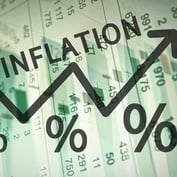What You Need to Know
- The delta variant of COVID-19 has slowed economic reopening, but the world is making considerable progress in containing the pandemic.
- While China’s unpredictable regulatory actions dominate the headlines, slowing economic growth there may be a greater risk.
- Trends in wages and rents are potential threats to the expectation that inflation pressures will ease next year.
Equity market performance for the remainder of 2021 will be heavily influenced by the “wall of worry” that contributed to souring investor sentiment in September, such as China’s regulatory actions, rising energy prices, inflation, and policy uncertainty.
COVID-19 also continues to be a threat to the economic recovery, though inflation updates have seemingly replaced COVID-19 as the lead in many daily market updates.
Economic reopening progress has slowed in response to the impact of the highly transmissible delta variant of COVID-19. But the world is making considerable progress in containing the pandemic. COVID cases and hospitalizations continue to fall rapidly; cases have dropped by more than 40% since the sustained national peak in the U.S. and are down 85% in Florida.
A significant percentage of the developed world’s adult population has been vaccinated; emerging markets such as China, Brazil and South Korea have made significant progress after a disappointingly slow rollout of vaccines.
With an increasing percentage of the global population vaccinated and some degree of natural immunity provided by prior COVID infection, it is likely that economic reopening will be delayed but not derailed by the delta variant.
China’s regulatory actions, tensions with the U.S. and slowing economic growth also weigh heavily on investor sentiment. Although China’s unpredictable regulatory actions dominate the headlines, slowing economic growth there may be a greater risk. Many of the issues addressed by Chinese regulators mirror concerns of Western governments, such as systemic risk in the financial sector, anti-monopoly enforcement, data security, income inequality, and protection of small and medium enterprises.
More damaging to global growth is China’s stop/start approach to fiscal and monetary policy and the government’s necessary but disruptive deleveraging of the property sector. Cooling Chinese demand will echo through the world, jeopardizing the growth prospects for major exporters and foreign companies with a significant presence in China.
Energy prices are surging, which creates financial stress for many households and businesses. The rise in oil, coal and natural gas prices highlights the fragility of the energy supply chain at a time when the world is trying to transition toward renewable resources. Beijing’s push for a reduction of carbon emissions led producers to reduce output, causing rolling blackouts across numerous Chinese provinces. The British government enlisted army drivers to operate gas tanker trucks to help address the country’s fuel delivery crisis.
The recent energy crunch may be a preview of a bumpy transition to renewables that may take decades. Demand for fossil fuels may continue to be strong while supply of renewables will remain variable until intermittent sources of power such as wind and solar become more cost-effective and reliable to store and distribute. Energy supply/demand imbalances typically correct themselves over time, but geopolitical and U.S. domestic policy implications may lengthen the adjustment process.









 October 18, 2021 at 04:21 PM
October 18, 2021 at 04:21 PM











